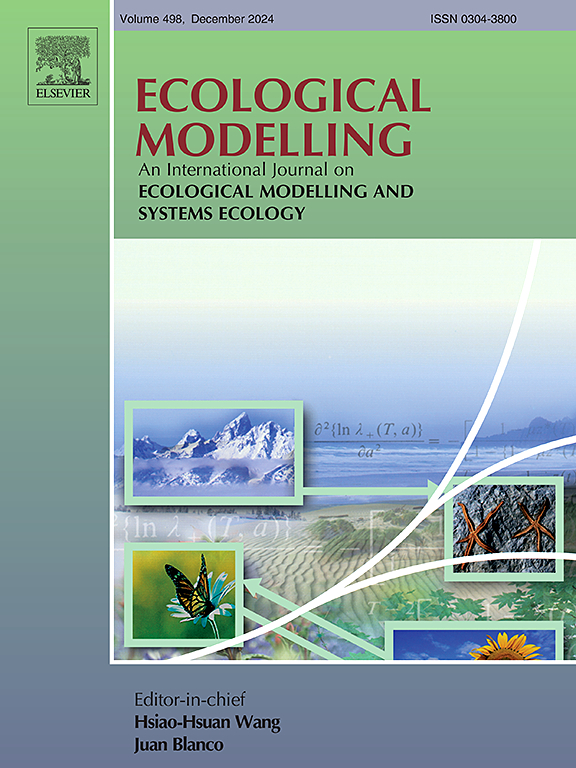森林昆虫种群:作为一阶和二阶相变的关键事件建模
IF 2.6
3区 环境科学与生态学
Q2 ECOLOGY
引用次数: 0
摘要
在本文中,通过描述种群爆发的发展过程作为物理系统中一阶和二阶相变的类似物,研究了森林昆虫种群中关键事件的建模方法。提出了表征相变过程的可测量参数。对几种森林昆虫物种进行了一阶相变模型分析,该模型可以表征昆虫爆发的风险。二级相变用于描述样地树木(食物)间昆虫的空间分布。这些转变表征了每个受害者单位的临界频率(树);在达到这个频率之后,昆虫就会定居并开始消耗所有的食物。二级相变模型可以很好地描述杆状病毒与海绵蛾幼虫的相互作用。该模型有助于估计杆状病毒对昆虫种群影响的潜伏期以及不同剂量杆状病毒对毛虫的绝对死亡率所需的时间。所提出的方法需要的生态系统状态数据最少。本文章由计算机程序翻译,如有差异,请以英文原文为准。
Forest insect populations: Modeling of critical events as first- and second-order phase transitions
In this article, methods are examined for modeling of critical events in forest insect populations by describing the processes of development of a population outbreak as analogs of first- and second-order phase transitions in physical systems. Measurable parameters characterizing the phase transition processes are proposed. For several forest insect species, first-order phase transition models were analyzed, which allowed to characterize risks of insect outbreaks. Second-order phase transitions were used to describe a spatial distribution of insects among trees (food items) on sample plots. These transitions characterize critical frequency of individuals per victim unit (tree); after attaining this frequency, insects colonize and start consuming all food items. It was also shown that a second-order phase transition model can describe the interaction of a baculovirus with spongy moth caterpillars. This model helped to estimate the latent period of the baculovirus's impact on the insect population and the time required for absolute mortality of caterpillars at different doses of the baculovirus. The proposed approach requires minimal data on the state of an ecosystem.
求助全文
通过发布文献求助,成功后即可免费获取论文全文。
去求助
来源期刊

Ecological Modelling
环境科学-生态学
CiteScore
5.60
自引率
6.50%
发文量
259
审稿时长
69 days
期刊介绍:
The journal is concerned with the use of mathematical models and systems analysis for the description of ecological processes and for the sustainable management of resources. Human activity and well-being are dependent on and integrated with the functioning of ecosystems and the services they provide. We aim to understand these basic ecosystem functions using mathematical and conceptual modelling, systems analysis, thermodynamics, computer simulations, and ecological theory. This leads to a preference for process-based models embedded in theory with explicit causative agents as opposed to strictly statistical or correlative descriptions. These modelling methods can be applied to a wide spectrum of issues ranging from basic ecology to human ecology to socio-ecological systems. The journal welcomes research articles, short communications, review articles, letters to the editor, book reviews, and other communications. The journal also supports the activities of the [International Society of Ecological Modelling (ISEM)](http://www.isemna.org/).
 求助内容:
求助内容: 应助结果提醒方式:
应助结果提醒方式:


